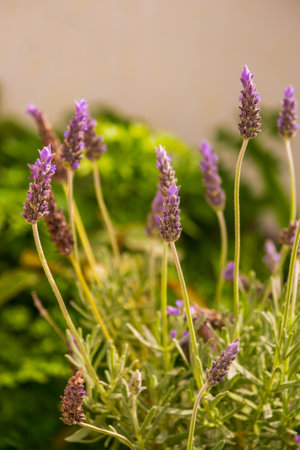Embracing the British Cottage Garden Tradition
There is something uniquely comforting about the classic British cottage garden. Steeped in centuries of tradition, these gardens are more than just a feast for the eyes—they are a celebration of nature’s gentle abundance and a reflection of local ways to nurture body and soul. The winding paths, overflowing borders, and fragrant herbs whisper tales of rural life, where every plant played its part in both daily living and wellbeing. Embracing this timeless approach means inviting a little of Britain’s tranquil countryside into your own space, connecting with a heritage that values simple pleasures, natural remedies, and harmonious living. As we explore the cottage garden’s enduring charm, we rediscover how cultivating traditional herbs can offer not only beauty but also support our health—naturally and gracefully.
Classic British Herbs: Time-Honoured Favourites
The charm of a British cottage garden is deeply rooted in its classic herbs, each cherished not only for their beauty and fragrance but also for their culinary and wellness benefits. Over centuries, these herbs have become staples in both traditional British gardens and kitchens. Let’s take a closer look at some of the most beloved varieties—rosemary, lavender, mint, and sage—and discover what makes them enduring favourites across the UK.
| Herb | Key Features | Wellness Benefits | Traditional Uses |
|---|---|---|---|
| Rosemary | Evergreen, aromatic leaves; woody stems | Supports memory, digestion, and circulation | Roast meats, herbal teas, natural air freshener |
| Lavender | Fragrant purple flowers; drought-tolerant | Promotes relaxation and restful sleep | Sachets, bath infusions, baking and desserts |
| Mint | Vigorous grower; refreshing scent; many varieties | Aids digestion, soothes headaches | Juleps, sauces, summer puddings, tisanes |
| Sage | Soft grey-green leaves; robust flavour | Anti-inflammatory properties; supports throat health | Savoury stuffing, herbal teas, cleansing smudge sticks |
Each of these herbs brings its own unique character to the British cottage garden. Rosemary’s resilience mirrors the steadfast spirit of the countryside, while lavender lines pathways with calming fragrance—a gentle invitation to pause and breathe. Mint thrives with little fuss, spreading cheerfully among borders or in pots. Sage rounds out the quartet with its silvery foliage and earthy aroma, a must-have for festive feasts and soothing brews. By nurturing these classic herbs, you not only honour a long-standing tradition but also bring natural wellness into your daily life—one fragrant handful at a time.

3. Practical Tips for Cultivating Herbs at Home
Creating your own British cottage garden brimming with traditional herbs is both rewarding and surprisingly simple, especially when you follow natural methods that respect the local climate. The British weather—cool, often damp, and changeable—can be an ally rather than a hindrance if you select herbs well-suited to these conditions.
Choosing the Right Herbs
Begin by selecting classic cottage garden favourites such as mint, rosemary, sage, thyme, and chives. These time-honoured herbs thrive in British soil and are resilient against unpredictable weather. Lavender, though it prefers a sunnier spot, can flourish in sheltered locations and adds both fragrance and beauty to your herb patch.
Soil Preparation and Planting
Herbs appreciate well-drained soil, so incorporate plenty of organic matter like compost or leaf mould. Raised beds or containers can help if your garden tends towards heavy clay or poor drainage. When planting, allow enough space between each herb to promote healthy airflow—a key consideration in the UK’s often humid summers.
Natural Tending Techniques
Embrace gentle gardening practices: water early in the morning to minimise evaporation, mulch with straw or bark to retain moisture during dry spells, and remove weeds by hand to avoid disrupting delicate root systems. Encourage beneficial insects by interplanting flowers such as marigolds or nasturtiums among your herbs.
Harvesting for Wellness
The best time to harvest most herbs is just before they flower, when their essential oils are at their peak. Snip leaves regularly using clean scissors to encourage bushy growth and prevent plants from becoming leggy. Dry or freeze surplus harvests for use throughout the year—perfect for brewing restorative teas or adding a fresh touch to seasonal British dishes.
4. Seasonal Wellness: Herbal Remedies Through the Year
The British cottage garden is a living reflection of the ever-changing seasons, with each phase offering its own array of herbs to nurture both body and mind. Embracing the rhythm of nature, many British homes turn to traditional herbal remedies that have been cherished for generations, using what’s freshly available to gently support daily well-being. Let’s take a gentle stroll through the year and explore how seasonal herbs can be woven into your wellness routine.
Spring Awakening: Cleansing and Renewal
As the days lengthen and the garden stirs back to life, spring brings fresh energy and a sense of renewal. Herbs like nettle and dandelion—often found at the garden’s edge—are perfect for gentle detox teas, helping to awaken sluggish systems after winter’s rest. A simple cup of nettle infusion, rich in minerals, can be a lovely morning ritual.
Summer Abundance: Uplifting and Soothing
Come summer, the cottage garden bursts with aromatic herbs such as lavender, chamomile, and mint. These can be used to craft calming teas or soothing compresses for sun-kissed skin. Mint leaves steeped in cool water make a refreshing drink on warm afternoons, while lavender sachets bring peace to bedrooms across Britain.
Herbal Highlights by Season
| Season | Key Herbs | Traditional Use |
|---|---|---|
| Spring | Nettle, Dandelion, Lemon Balm | Cleansing teas, gentle tonics, mood uplifting infusions |
| Summer | Mint, Lavender, Chamomile | Cooling drinks, calming sleep aids, soothing bath blends |
| Autumn | Sage, Rosemary, Thyme | Immune-boosting broths, warming teas for sniffles |
| Winter | Elderberry, Bay Leaf, Parsley | Comforting syrups, hearty stews, immune support infusions |
Autumn Comfort: Building Resilience
As temperatures drop and evenings draw in, autumn’s hardy herbs like sage and rosemary come to the fore. Traditionally used in broths and teas to bolster immunity and soothe sore throats, these robust flavours also add warmth to classic British dishes.
Winter Nourishment: Protection and Restoration
The quiet of winter calls for nurturing remedies. Elderberries are simmered into syrups to fend off colds, while bay leaf finds its way into slow-cooked stews that comfort from within. Even parsley—often overlooked—can be sprinkled over hearty meals for an extra burst of nourishment.
The Gentle Art of Seasonal Self-Care
Cultivating and using herbs from your cottage garden is more than just tradition—it’s an invitation to slow down and harmonise daily routines with nature’s wisdom. By weaving these seasonal plants into your home rituals, you’re not only supporting your own well-being but also keeping alive a gentle rhythm cherished across generations of British families.
5. Infusing Your Kitchen: Culinary Uses and Home Brews
The British cottage garden is a true treasure trove for anyone wishing to bring fresh, aromatic flavours into the kitchen. Incorporating homegrown herbs not only elevates the taste of traditional British fare, but also adds gentle nourishment to everyday meals. Imagine plucking a handful of parsley, thyme, or mint just steps from your door to transform classic dishes such as roast lamb with rosemary, minted new potatoes, or a simple parsley sauce over flaky fish. These timeless pairings reflect the heart of British culinary heritage, emphasising wholesome ingredients and honest flavours.
Beyond main courses, cottage garden herbs lend themselves beautifully to homemade infusions and nourishing teas. Steep chamomile flowers or lemon balm leaves in hot water for a calming evening brew, or create a refreshing nettle and peppermint tea to support wellbeing throughout the day. For something special, try crafting your own elderflower cordial—an iconic summer refreshment enjoyed across the UK—by infusing delicate blossoms with citrus and sugar.
Herbs like chives and sorrel can be finely chopped and scattered over buttery scrambled eggs, while sprigs of marjoram or sage bring depth to slow-cooked stews and hearty pies. Even humble salads come alive with the addition of edible flowers such as borage or nasturtium, adding both colour and gentle peppery notes. When it comes to baking, lavender or rosemary can be infused into shortbread biscuits for a subtly floral twist that pairs perfectly with an afternoon cup of tea.
The joy of cottage garden herbs lies in their versatility and freshness. Whether you are stirring them into soups, blending them into pestos, or simply brewing a restorative tea, these plants connect us to the rhythms of nature and the comforting traditions of British home cookery. With each infusion and every meal prepared from your own garden’s bounty, you invite both flavour and wellbeing into your daily life.
6. Mindful Moments: The Holistic Benefits of the Cottage Herb Garden
Cultivating a British cottage garden brimming with traditional herbs is not merely a practice in gardening—it is a gentle invitation to mindfulness and holistic well-being. Amidst the soft hum of bees and the soothing fragrance of rosemary or lavender, each moment spent tending to your patch becomes an opportunity to pause, breathe, and reconnect with nature’s rhythms. This mindful engagement transforms routine care—watering, pruning, harvesting—into acts of quiet reflection, allowing worries to gently fade into the background.
The very design of a cottage garden, with its winding paths and informal drifts of herbs, encourages a slower pace and fosters a sense of sanctuary. This tranquil space offers more than visual beauty; it provides a restorative atmosphere where one can find solace from modern life’s demands. The simple act of gathering fresh mint for tea or thyme for supper roots us in the present moment and deepens our appreciation for the nourishing gifts of the earth.
In British tradition, these gardens have long been spaces for contemplation and gentle activity. Whether you are inhaling the earthy scent of sage after rain or brushing against chamomile on a sunny afternoon, every sensory experience contributes to emotional balance and calm. Over time, this mindful interaction with your garden supports not only physical health—through nutritious homegrown herbs—but also mental clarity and emotional resilience.
By celebrating the natural, calming influence of nurturing a cottage herb garden, we embrace an age-old approach to wellness that values harmony between people and place. It reminds us that true well-being flourishes where we take time to care for ourselves and our surroundings, cherishing both the quiet joys and subtle healing found in nature’s embrace.


